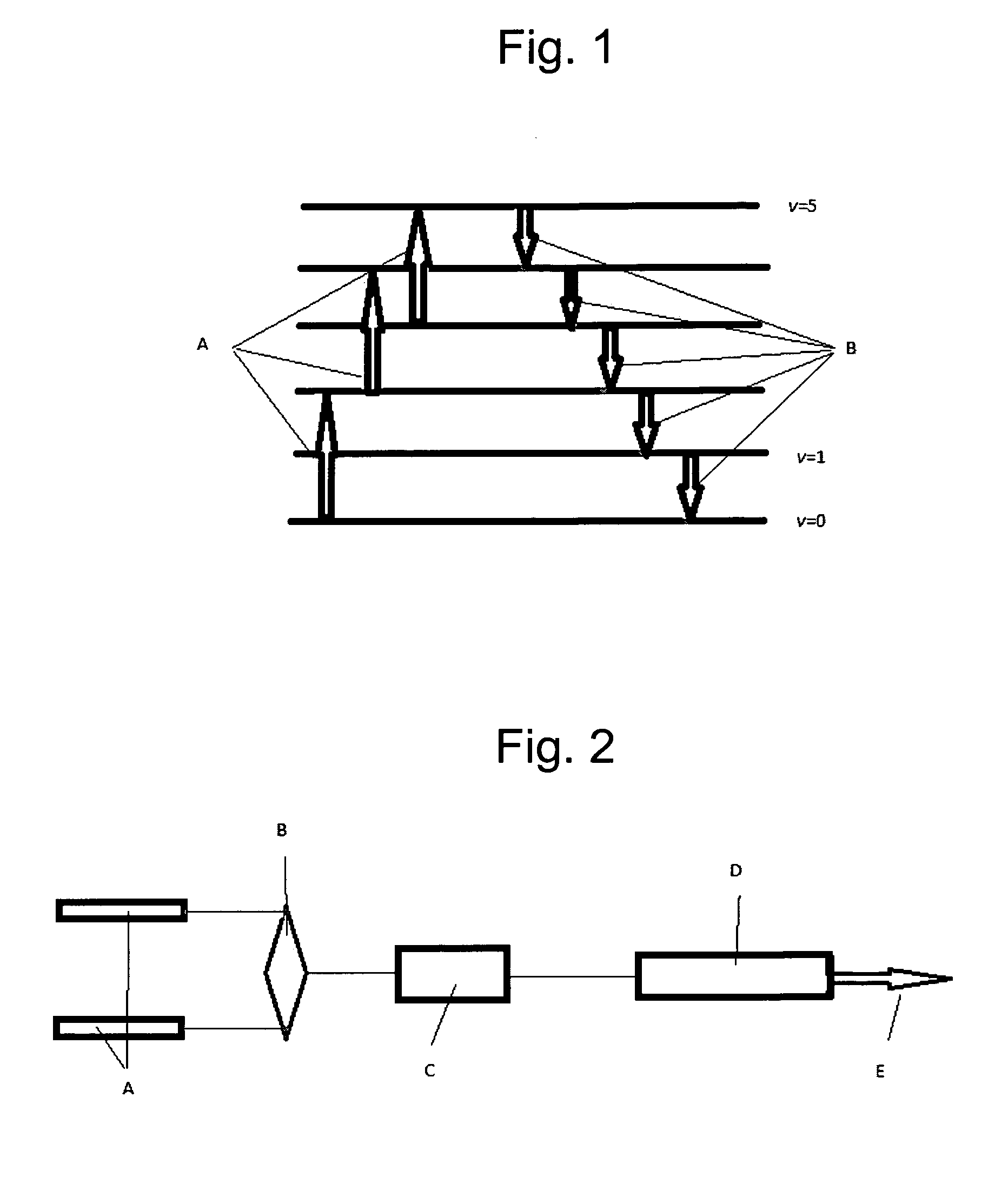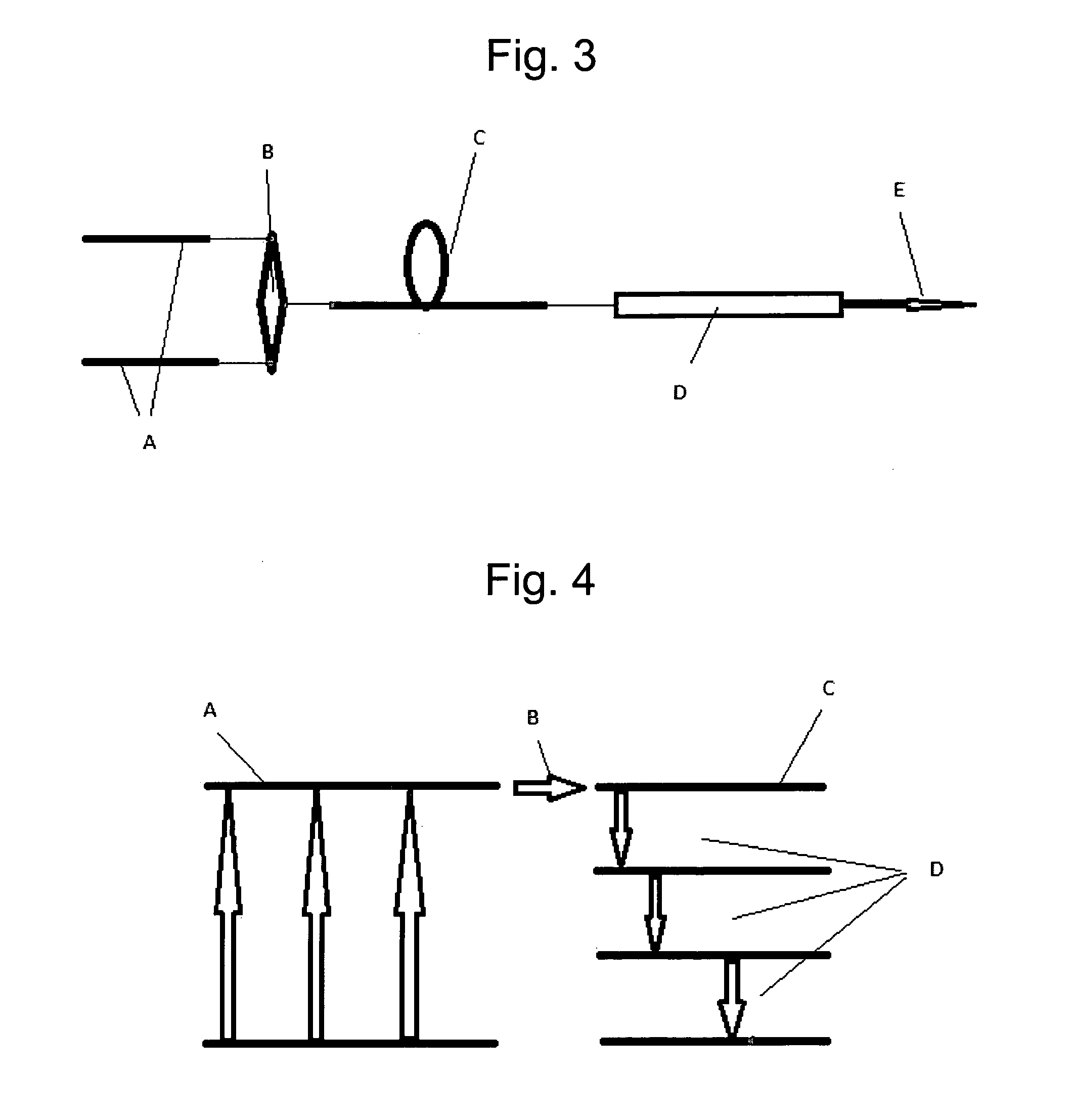Molecular gas laser
- Summary
- Abstract
- Description
- Claims
- Application Information
AI Technical Summary
Benefits of technology
Problems solved by technology
Method used
Image
Examples
Embodiment Construction
[0025]Definition of Deactivant or de-activant: a molecule or atom which may or may not efficiently serve to accept or dissipate excitation from another excited molecule, thus deactivating said molecule.
[0026]The invention presented here is to use the synergism inherent in the recent development of efficient high power / high energy laser diode pumped Thulium (Tm) doped solid state lasers and the matching of said systems useful spectral range with 1st (principle and excited state [FIG. 1, A], or multiple principle), overtone transitions of suitable relevant gases. Several spectrally discrete pumps on distinct transitions of a specific overtone are also possible [analogous with pump on [FIG. 4, A]—distinct rotational vibrational transitions].
[0027]This multi spectral pump approach implemented as indicated usefully broadens the interaction bandwidth experienced by the solid state pump sources significantly above that of the typical single frequency narrow band matched to a single molecul...
PUM
 Login to View More
Login to View More Abstract
Description
Claims
Application Information
 Login to View More
Login to View More - R&D
- Intellectual Property
- Life Sciences
- Materials
- Tech Scout
- Unparalleled Data Quality
- Higher Quality Content
- 60% Fewer Hallucinations
Browse by: Latest US Patents, China's latest patents, Technical Efficacy Thesaurus, Application Domain, Technology Topic, Popular Technical Reports.
© 2025 PatSnap. All rights reserved.Legal|Privacy policy|Modern Slavery Act Transparency Statement|Sitemap|About US| Contact US: help@patsnap.com



